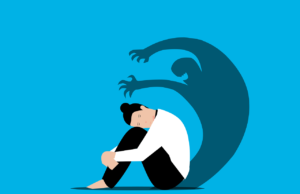
Nightmares and their treatment

Nightmares
During rapid eye movement (REM) sleep, it is thought that we digest and process the daily residue of experiences that accumulated during the day, and perhaps, additional experiences as well, upon dreaming. When people are deprived of REM sleep, they tend to become irritable and are less able to take things in stride without becoming overwhelmed and anxious. They may even become disoriented.
It is possible to process dream images utilizing EMDR psychotherapy.
This includes the processing of nightmares, that is, vividly realistic, frightening dreams that make your heart pound, elicit fear, and may lead to an abrupt early awakening. They occur mostly during REM sleep, which becomes more prolonged as the night progresses into early morning.
While more prevalent with children, it is estimated that between 2% and 8% of the adult population is plagued by nightmares, and that one out of two adults have them at one time or another.
While each person has different dreams and nightmares, there may be some collective communalities, like dreaming of falling from heights or escaping danger. Some people may relive a traumatic experience, such as an accident or military incident.
During the EMDR processing of a recurring nightmare image, which is assumed to reflect an undigested past experience, the real-life experience that led to it can often be uncovered. After it is processed, it is unlikely to recur.
Potential triggers of nightmares
Are your nightmares interrupting your sleep? Causing you significant distress? If so, it is important to identify what is causing them.
There are various known triggers, including health problems such as sleep apnea or restless legs syndrome; sleep deprivation, anxiety and depression; post-traumatic stress disorders; withdrawal from substances such as alcohol or tranquilizers; and antidepressant medications that modulate the activity of specific neurotransmitters in the brain. Moreover, it is thought that late-snacking and associated metabolism and brain activity, as well as the timing of alcohol, caffeine or nicotine intake—may also increase the probability of occurence.
Treatment of nightmares
When the underlying medical cause is identified (e.g., sleep apnea), it can often be targeted and treated.
Regarding psychological triggers, various forms of therapy may be considered. EMDR is an effective treatment of choice.
EMDR has been likened to REM sleep, since both involve rapid eye movements as information is processed. Both its mode of action (to the extent it is understood) and its proven effectiveness with processing traumatic experiences make EMDR a good choice.
Did you know?
EMDR is based on the Adaptive Information Processing (AIP) model of information. Attending to visual, tactile and/or auditory bilateral stimuli (such as following a visual stimulus from right to left), while focusing on past experiences (e.g., their images, physical sensations and associated feelings) promotes a learning process during which, revisiting these “target” memories, links them with subsequent experiences and thus “updates” them (reprocessing). Under these conditions, the person learns the empowering adaptive lesson to be learned from their previous experience or memory. Subsequently, the target memory can now be stored with other memories forming part of an adaptive network.
For example, a belief such as “I am in danger” may be replaced by, “It’s over. I’m safe now.” This reframe, and others like it, allow the parasympathetic nervous system (and specifically, the ventral vagal pathway) to gain dominance over the sympathetic nervous system, which operates the so-called “Fight or Flight” response to stress. The person is no longer on high alert, and can relax enough to engage socially with others.
According to Francine Shapiro, the founder of EMDR, the sleep theorist whose work is most compatible with the AIP model is Jonathan Winson. He suggested that mammals process survival information during REM—what the animal experienced during the day is synthesized and stored in memory to help it survive in the future.









